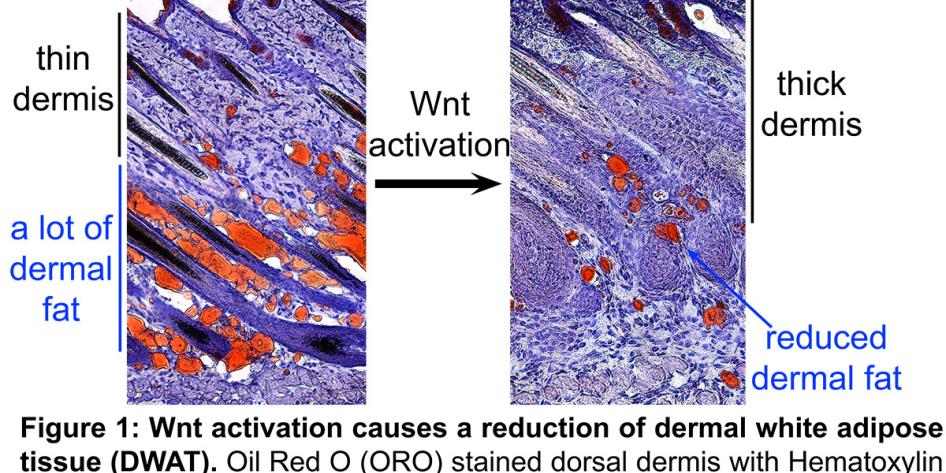I am a fourth year Ph.D. student and I just started in person this year. I was an undergraduate in Nankai University Tianjin, China. In my undergraduate project, I focused on gene character analysis in Candida albicans. Then I got my master's degree at Tufts University. In Tufts my project was oral drug delivery by PH sensitive biomaterial. Because I want to do some signaling pathway associated genetic disease related research, I came to Dr. Atit’s lab. I have been here for several years in the lab, I find all the students in this lab are enthusiastic and each person will give you advice for your project when you give the presentation that will strengthen your critical thinking a lot. In my spare time I’d like to go traveling. The natural landscapes are the most attractive place for me.
My Project
Fibrosis of the skin affects nearly 5% of people worldwide annually, yet there are no effective treatments for its reversal. Your skin’s dermis is composed of fibroblasts and extracellular matrix or ECM and a prominent layer of dermal fat, composed of adipocytes. Skin fibrosis is characterized by dermal thickening caused by fibroblast activation and increased ECM deposition as well as the loss of dermal fat. This fat loss is poorly understood, but greatly impacts the function and mechanical properties of your skin. What we want to know is how dermal fat is lost? Which signals or processes are involved?
The Wnt signaling pathway stands out from other pro-fibrotic signaling pathways because it’s involved in fibroblast/adipocyte cell fate decisions. When we activate Wnt signaling in mouse skin, we can cause fibrosis including dermal fat loss. Thus, we hypothesized that, Wnt signaling induces fibrotic fat loss via lipolysis (which is the process by which lipid is broken down into fatty acids and glycerol). Within a few days of Wnt activation in mouse skin we see evidence of lipid depletion including reduction in adipocyte size, visible lipid breakdown by electron microscopy, and an increase in the active form of key lipolytic enzymes. In vitro, Wnt activation also exerts cell autonomous lipolytic effects.
My project is testing if Wnt signaling activation in mature fat cells is sufficient to causes lipid depletion and contribute to skin fibrosis. My research also tests the role of Wnt signaling pathway induced lipodystrophy of the mature dermal white adipocytes is dependent on the lipolysis pathway.


